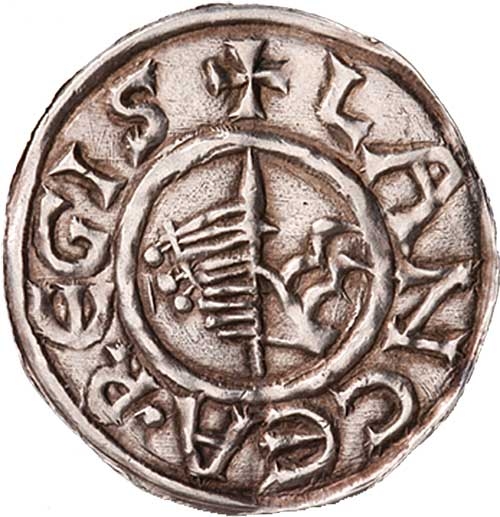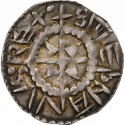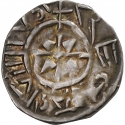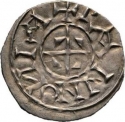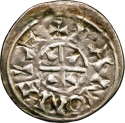You are about to finish your registration. Please check your mailbox (including spam folder). There should be a letter with a confirmation link. Check setting to make sure that your e-mail address is correct.
Send letter againDescription
Following his coronation, King Stephen exercised royal prerogatives, including the minting of coins. Until 1968, Hungarian numismatics considered Stephen's silver denier inscribed with "STEPHANUS REX" as the first Hungarian coin. However, an unexpected turn occurred in 1968 when, during earthworks near the village of Nagyharsány in Baranya County, a bulldozer shattered a pottery vessel, revealing jewelry and coins. Among them were 40 pieces of a previously unknown coin type, weighing around 1.2 grams with a diameter of approximately 23 mm. The obverse of the coin features a central motif of a lance, a symbol of royal dignity. The outer circle reads "LANCEA REGIS" (the king's lance), while the inner circle depicts an arm holding a flag-bearing lance from the right. On the reverse, the outer circle reads "REGIA CIVITAS" (royal city), while the inner circle portrays an unusual depiction of a Carolingian church, with the inscription "RECI" referring back to the outer circle.
Research following the discovery concluded that the inscriptions and the lance motif on the obverse could only symbolize King Stephen's authority. Similarly, the depiction of the Carolingian church on the reverse supports Stephen's attribution, as it appears on his other coins and those of his successors. This representation of the church also signifies Stephen's conversion of the pagan Magyars and his initiation of the Hungarian Church's establishment.
The discovery in Nagyharsány opened a new chapter in Hungarian numismatics, fundamentally altering our understanding of the origins of Hungarian coinage.
Obverse

|
Depicts an arm holding a flag-bearing lance, a symbol of royal dignity, surrounded by the Latin inscription "The king's lance". LANCEA • REGIS + |
|---|---|
Reverse

|
Depicts a Carolingian church, with the inscription "REG" referring back to the outer circle with the Latin inscription "Royal city". REGIA • CIVITAS + |
| Edge |
